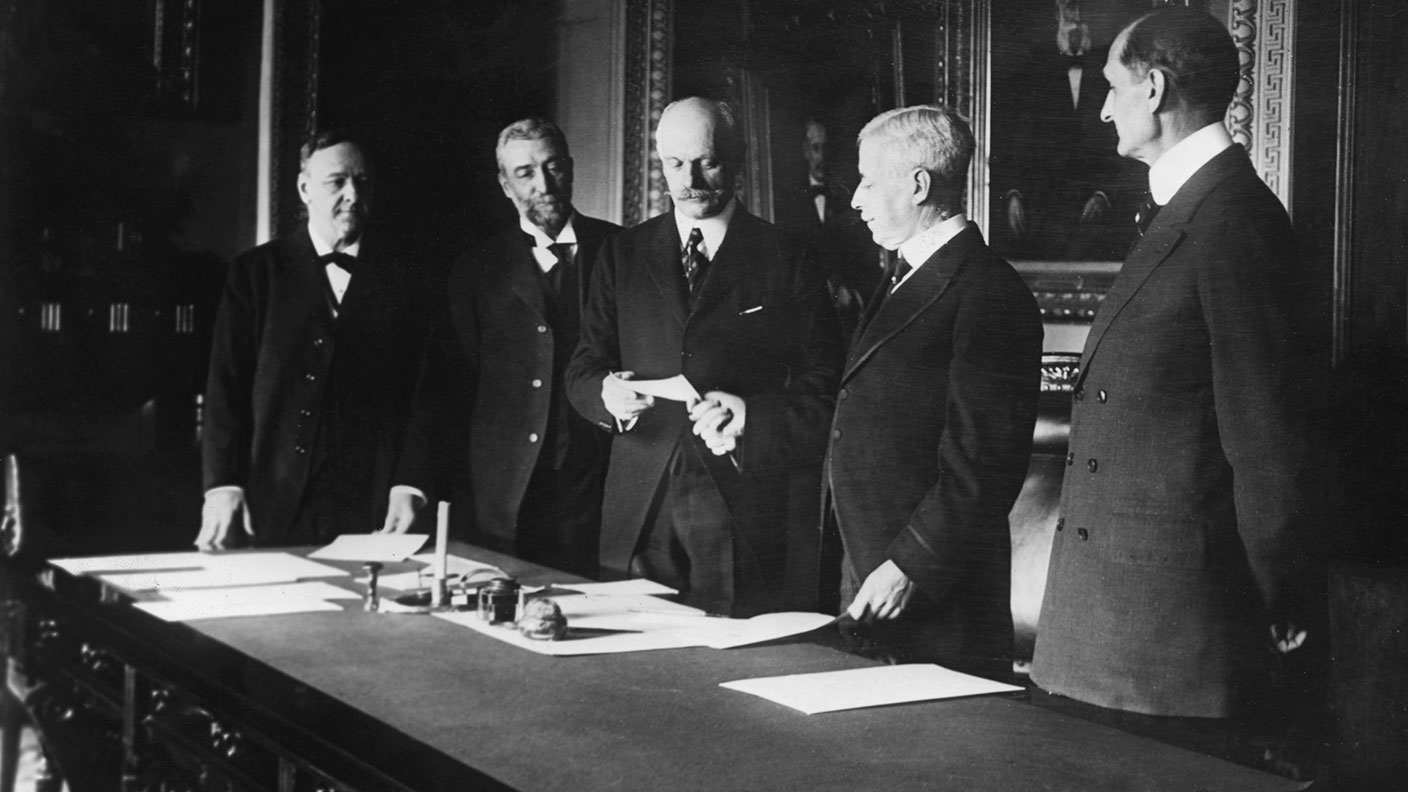4 August 1916: The United States buys the Danish Virgin Islands
On this day in 1916, the United States bought a group of Caribbean islands from Denmark, renaming them the Virgin Islands of the United States.


Most of us can only dream of following in the sandy footprints of Sir Richard Branson by buying a slice of paradise in the Virgin Islands. But the Virgin Group founder was by no means the first: 99 years ago, the United States bought a whole bunch of islands in the Caribbean archipelago from Denmark, but for very different reasons.
The Danes had settled the two big islands east of Puerto Rico – Saint Thomas and Saint John – by the 1710s, and bought Saint Croix, the larger island to the south, from France in 1733.
For the rest of the century, the islands flourished by growing tobacco, indigo, cotton, ginger, and, of course, sugar cane, with Saint Croix becoming the sixth most productive sugar island in the Caribbean. In Saint Thomas, Denmark gained a trading post in the Americas, which also, sadly, became a focal point for the slave trade.
MoneyWeek
Subscribe to MoneyWeek today and get your first six magazine issues absolutely FREE

Sign up to Money Morning
Don't miss the latest investment and personal finances news, market analysis, plus money-saving tips with our free twice-daily newsletter
Don't miss the latest investment and personal finances news, market analysis, plus money-saving tips with our free twice-daily newsletter
But as the decades wore on, the economy declined. Slavery was eventually swept away, and sugar could be grown more cheaply elsewhere, including in Europe, where sugar beet was now produced. By the middle of the 19th century, the Danish Virgin Islands had started to weigh on the exchequer in Copenhagen.
Yet, despite enquiries made by the Americans, Denmark decided to hang on to their islands until 1867, when Denmark accepted an offer from Secretary of State William Seward for $7m. But due to domestic politics back in Washington, the deal fell through.
The opening of the Panama Canal in 1914 gave the United States another reason to want to get their hands on the islands, believing they would be better able to protect the canal's approaches. The eruption of the First World War that year made the matter all the more urgent. Washington feared that if Germany invaded Denmark, then the islands would become a base for German submarines in the Caribbean.
This gave the Americans all the leverage they needed. If Denmark wouldn't sell the islands, they would simply take them. Preferring the first option, the Danes agreed to a price of $25m, the equivalent of just over half a billion dollars in today's money.
Secretary of State Robert Lansing and the Danish minister to the United States, Constantin Brun, signed the transfer on 4 August 1916 in New York. The following year, on 31 March, the United States took formal possession of the islands.
Get the latest financial news, insights and expert analysis from our award-winning MoneyWeek team, to help you understand what really matters when it comes to your finances.

-
 London claims victory in the Brexit wars
London claims victory in the Brexit warsOpinion JPMorgan Chase's decision to build a new headquarters in London is a huge vote of confidence and a sign that the City will remain Europe's key financial hub
-
 Rachel Reeves's Autumn Budget: What it means for the UK
Rachel Reeves's Autumn Budget: What it means for the UKOpinion A directionless and floundering government has ducked the hard choices at the Autumn Budget, says Simon Wilson
-
 31 August 1957: the Federation of Malaya declares independence from the UK
31 August 1957: the Federation of Malaya declares independence from the UKFeatures On this day in 1957, after ten years of preparation, the Federation of Malaya became an independent nation.
-
 13 April 1960: the first satellite navigation system is launched
13 April 1960: the first satellite navigation system is launchedFeatures On this day in 1960, Nasa sent the Transit 1B satellite into orbit to provide positioning for the US Navy’s fleet of Polaris ballistic missile submarines.
-
 9 April 1838: National Gallery opens in Trafalgar Square
9 April 1838: National Gallery opens in Trafalgar SquareFeatures On this day in 1838, William Wilkins’ new National Gallery building in Trafalgar Square opened to the public.
-
3 March 1962: British Antarctic Territory is created
Features On this day in 1962, Britain formed the British Antarctic Territory administered from the Falkland Islands.
-
10 March 2000: the dotcom bubble peaks
Features Tech mania fanned by the dawning of the internet age inflated the dotcom bubble to maximum extent, on this day in 2000.
-
9 March 1776: Adam Smith publishes 'The Wealth of Nations'
Features On this day in 1776, Adam Smith, the “father of modern economics”, published his hugely influential book The Wealth of Nations.
-
 8 March 1817: the New York Stock Exchange is formed
8 March 1817: the New York Stock Exchange is formedFeatures On this day in 1817, a group of brokers moved out of a New York coffee house to form what would become the biggest stock exchange in the world.
-
7 March 1969: Queen Elizabeth II officially opens the Victoria Line
Features On this day in 1969, Queen Elizabeth II took only her second trip on the tube to officially open the underground’s newest line – the Victoria Line.